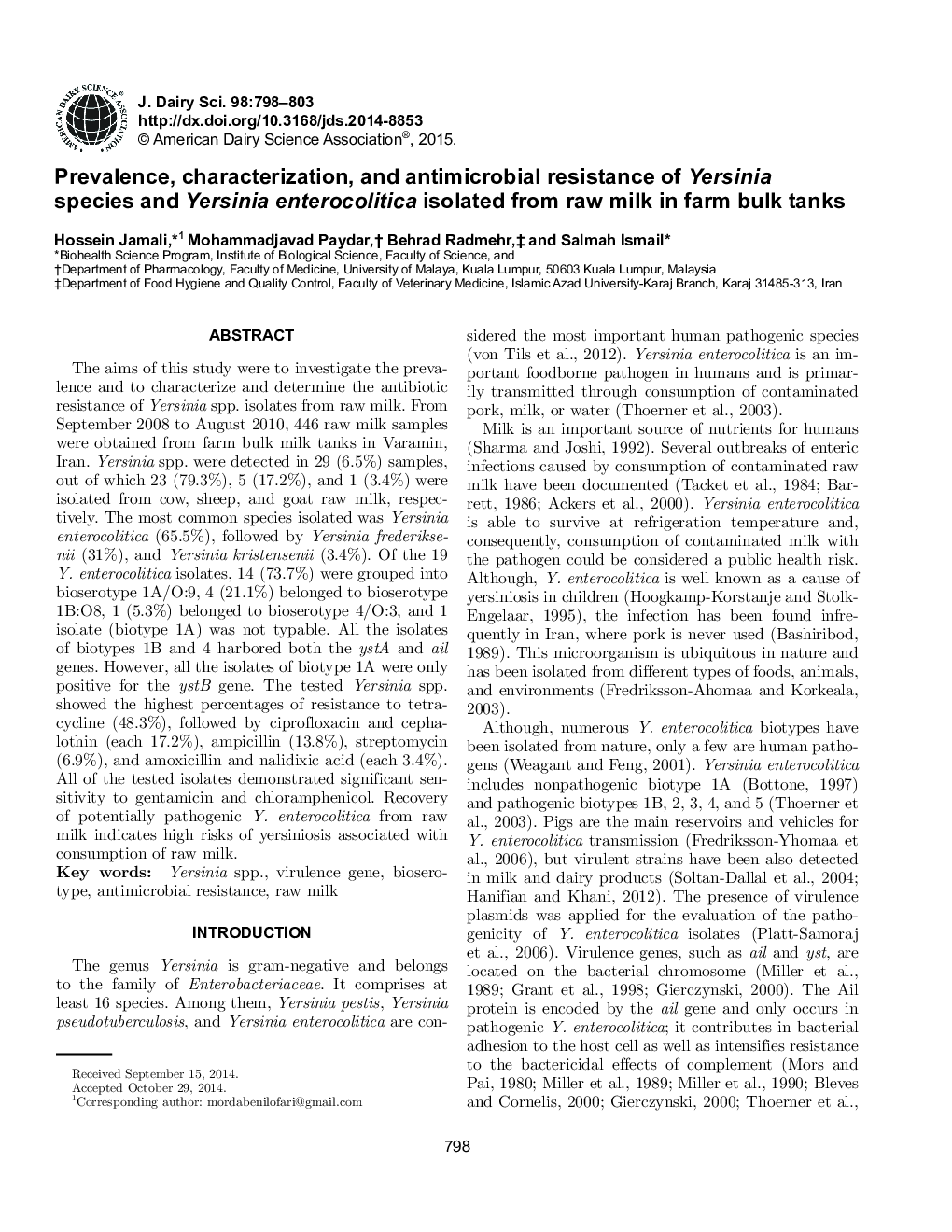| Article ID | Journal | Published Year | Pages | File Type |
|---|---|---|---|---|
| 10975360 | Journal of Dairy Science | 2015 | 6 Pages |
Abstract
The aims of this study were to investigate the prevalence and to characterize and determine the antibiotic resistance of Yersinia spp. isolates from raw milk. From September 2008 to August 2010, 446 raw milk samples were obtained from farm bulk milk tanks in Varamin, Iran. Yersinia spp. were detected in 29 (6.5%) samples, out of which 23 (79.3%), 5 (17.2%), and 1 (3.4%) were isolated from cow, sheep, and goat raw milk, respectively. The most common species isolated was Yersinia enterocolitica (65.5%), followed by Yersinia frederiksenii (31%), and Yersinia kristensenii (3.4%). Of the 19 Y. enterocolitica isolates, 14 (73.7%) were grouped into bioserotype 1A/O:9, 4 (21.1%) belonged to bioserotype 1B:O8, 1 (5.3%) belonged to bioserotype 4/O:3, and 1 isolate (biotype 1A) was not typable. All the isolates of biotypes 1B and 4Â harbored both the ystA and ail genes. However, all the isolates of biotype 1A were only positive for the ystB gene. The tested Yersinia spp. showed the highest percentages of resistance to tetracycline (48.3%), followed by ciprofloxacin and cephalothin (each 17.2%), ampicillin (13.8%), streptomycin (6.9%), and amoxicillin and nalidixic acid (each 3.4%). All of the tested isolates demonstrated significant sensitivity to gentamicin and chloramphenicol. Recovery of potentially pathogenic Y. enterocolitica from raw milk indicates high risks of yersiniosis associated with consumption of raw milk.
Related Topics
Life Sciences
Agricultural and Biological Sciences
Animal Science and Zoology
Authors
Hossein Jamali, Mohammadjavad Paydar, Behrad Radmehr, Salmah Ismail,
